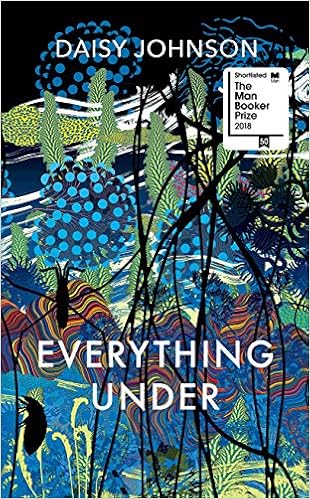 3 Stars
3 Stars
This book came to my attention because it appeared on the Man Booker
Prize shortlist and because it is a re-imagining of the Oedipus myth. It has also received rave reviews. Unfortunately, mine will not be one of those.
For the first 13 years of her life, Gretel Whiting lived on a canal
boat with her mother Sarah. Then they
lived above a stable. When Gretel was
16, Sarah disappeared. Now 16 years
later, they are reunited but Sarah is experiencing the early stages of dementia,
so Gretel’s attempts to reconnect with her mother and learn her life story meet
with limited success. Gretel is
especially interested in learning more about Marcus, a young man who lived with
them for a month when she was 13, and what happened to him.
Reading this book is like floating down a turbid river in a disabled
boat with flotsam snagging the boat and demanding your attention before it breaks
free and moves on to be replaced by more debris. The reader has no control over where the boat
goes or what emerges from the water.
Then because the current is fast, nothing remains long enough for the
reader to fully grasp it. All one has is
vague impressions. Gretel speaks of the
story as “some lies, some fabrications . . . hearsay, guesswork.” I understand that the lack of clarity is
intentional and central to the theme, but the constant ambiguity is just too
much for my liking.
The Bonak is a perfect example of the novel’s ambiguity. It is an ever-present menace though Gretel
understands that “it’s not even a real word.
It doesn’t even exist” and is just an embodiment of “what we are afraid
of.” Then, however, Sarah captures the scaly
creature: “Its legs were short and
strong, clawed; its mouth was long and toothy, its tail vanished into the murky
water, its body was thick and rough until the belly, which was pale as churned
cream.” It even serves as food: “The meat was gamey, a little like the fish
we used to eat from the water.” So is it
real of just a manifestation?
A major theme is that everything is fluid. For example, gender and memory are fluid. There are two transgender characters in the
novel. Gretel becomes Margot becomes
Marcus, and there is more than one Gretel! The unreliability of memories is not a new idea because “everything we
remember is passed down, thought over, is never the way that it was in reality.” Gretel admits, “I couldn’t tell what I’d made
up and what had really happened” and for Sarah, “memories flash like broken
wine glasses in the dark and then are gone.”
Time is also shown as fluid; the novel moves back and forth through time
and Gretel emphasizes that “the past did not die just because we wanted it to.
. . . The past was not a thread trailing behind us but an anchor.”
The novel also examines destiny and free will. Some characters speak of having a lack of choice,
a determinism. And Gretel wants to
scream at Sarah: “I want to shout that
you chose to leave me, no one made you do it, you cannot lie down behind your
badly made decisions and call them fate or determinism or god.” But then Gretel thinks that maybe “all of our
choices are remnants of all the choices we made before. As if decisions were shards from the bombs of
our previous actions.” And perhaps our
personalities are determined by our environment: “we are determined by our landscape, that our
lives are decided by the hills and the rivers and the trees.”
All the rave reviews I’ve read inevitably refer to the lyrical style of
the book as one of its outstanding elements.
The style is indeed lyrical with much reliance on imagery. I did enjoy the playfulness with
language. Sarah and Gretel invented a
language of their own: “sheesh time
meant . . . some time alone. A
harpiedoodle was a small annoyance . . . Something comfortable or enjoyable,
often soft or warm, was duvduv . . . effie meant the current was faster as in the
water was effing along or effying along the banks; that sills was the noise the
river made at night and grear the taste of it in the morning.” My issue is that lyrical writing is not in
itself sufficient; more is needed to sustain the narrative.
I enjoy re-tellings of myths but I didn’t find this one worked. I found it difficult to believe that a
teenager living at the end of the 20th century would unquestioningly believe a
neighbour who tells her that she will kill her father and have sex with her
mother. Then there’s the problem of the
author’s being selective about what parts of the myth to incorporate. In addition, elements of the Hansel and
Gretel fairy tale are added to muddy the waters.
This is obviously not the book for me.
The constant ambiguity was by design but was just too much for me. To continue my river analogy, at times I felt
as if I’d been thrown into the murky water and was drowning. Someone with more of a Type B personality
might enjoy the novel, but it was a struggle for me.
No comments:
Post a Comment